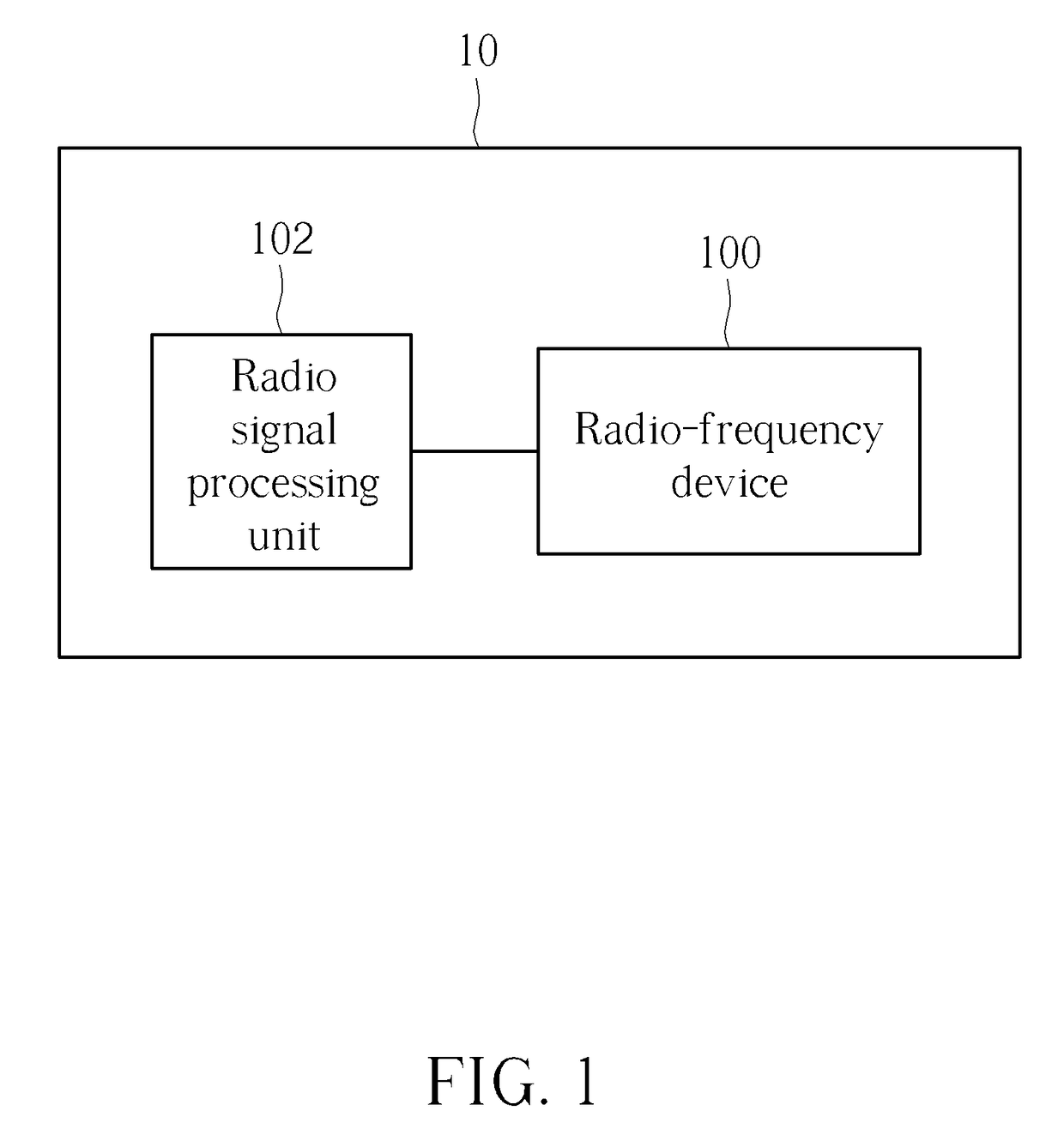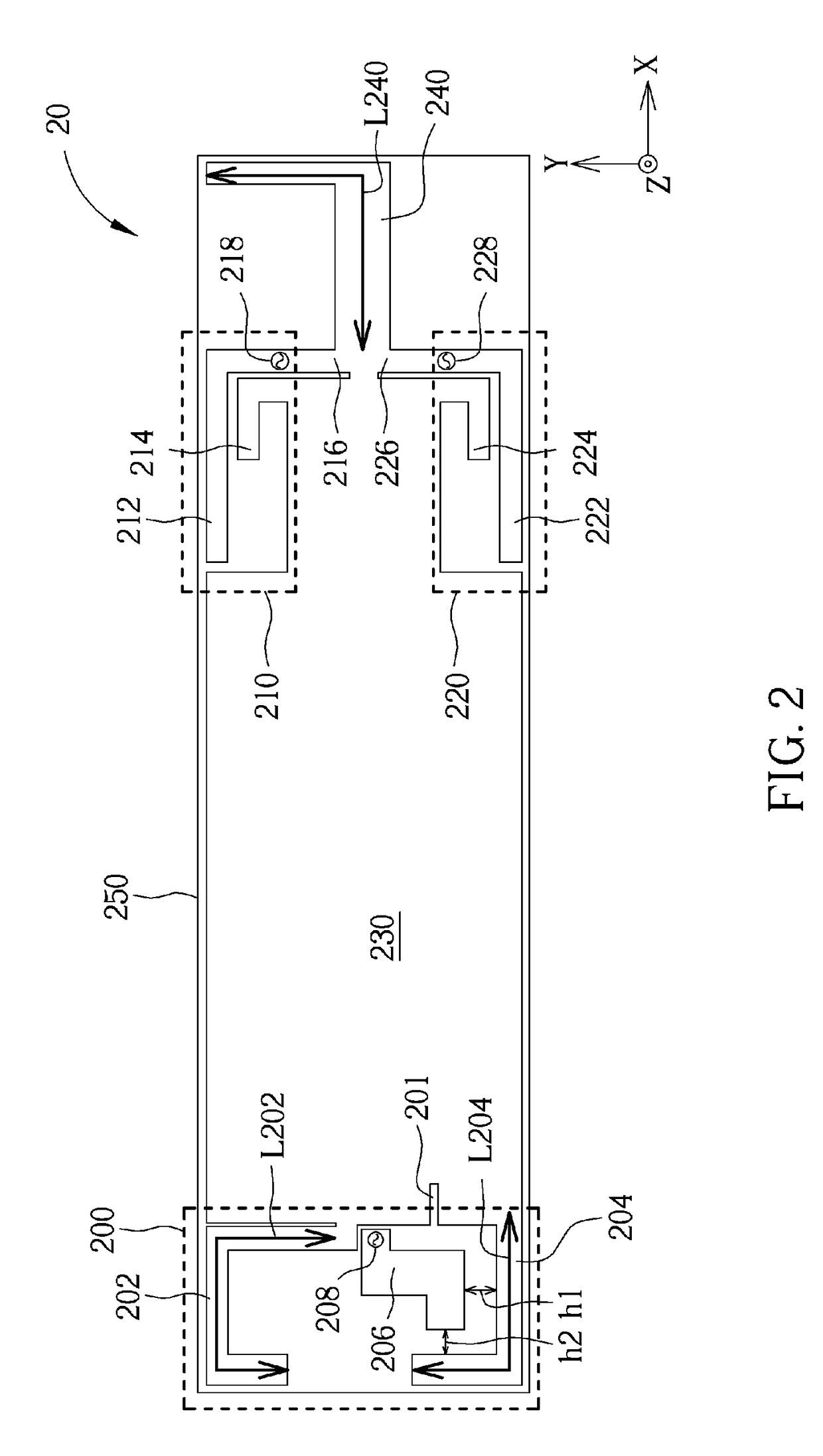Radio-frequency device and wireless communication device for enhancing antenna isolation
a radio frequency device and antenna isolation technology, applied in the direction of antennas, antenna details, antenna couplings, etc., can solve the problems of not meeting the broadband requirement of wireless communication systems, the radiation elements of such antennas are too long to be installed in miniature wireless communication systems, etc., to enhance isolation, enhance isolation, and improve antenna efficiency and bandwidth.
- Summary
- Abstract
- Description
- Claims
- Application Information
AI Technical Summary
Benefits of technology
Problems solved by technology
Method used
Image
Examples
Embodiment Construction
[0024]Please refer to FIG. 1, which is a schematic diagram of a wireless communication device 10 according to an embodiment of the present invention. The wireless communication device 10 may be any electronic product with wireless communication functionalities such as a mobile phone, a computer system, a wireless access point device, a wireless base station, a USB dongle, and so on. The wireless communication device 10 is briefly composed of a radio-frequency device 100 and a radio signal processing unit 102, but is not limited herein. The radio-frequency device 100 provides a wireless communication functionality of the wireless communication device 10. Specifically, the radio signal processing unit 102 may support an operation of simultaneous transmission or reception of wireless signals in the same frequency band, and the radio-frequency device 100 ensures isolation under this operation. Examples of “simultaneous transmission or reception of wireless signals in the same frequency ...
PUM
 Login to View More
Login to View More Abstract
Description
Claims
Application Information
 Login to View More
Login to View More - R&D
- Intellectual Property
- Life Sciences
- Materials
- Tech Scout
- Unparalleled Data Quality
- Higher Quality Content
- 60% Fewer Hallucinations
Browse by: Latest US Patents, China's latest patents, Technical Efficacy Thesaurus, Application Domain, Technology Topic, Popular Technical Reports.
© 2025 PatSnap. All rights reserved.Legal|Privacy policy|Modern Slavery Act Transparency Statement|Sitemap|About US| Contact US: help@patsnap.com



